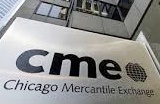CME Group to close most of its futures pits in Chicago and New York
05 Feb 2015
CME Group yesterday said that it would close most of its futures pits in Chicago and New York, in a move that draws the curtains on trading floors that grew in the 20th century alongside America's agriculture, mining and energy industries and were once synonymous with capitalism, Bloomberg reported.
 With open outcry trading winding down to just 1 per cent of volume at CME, the owner of the Chicago Mercantile Exchange and New York Mercantile Exchange decided to shut nearly all its trading floors by 2 July, according to a statement from Chicago-based CME.
With open outcry trading winding down to just 1 per cent of volume at CME, the owner of the Chicago Mercantile Exchange and New York Mercantile Exchange decided to shut nearly all its trading floors by 2 July, according to a statement from Chicago-based CME.
The exceptions would include Standard & Poor's 500 Index futures and a number of options on futures.
According to Darrell Duffie, a finance professor at Stanford University and Bloomberg View contributor, said CME had shown some loyalty towards market participants whose livelihood had depended on their participation in open-outcry trading.
Floor trading started declining with the rise of computers in the 1990s according to Craig Pirrong, a finance professor at the University of Houston.
He said the floor in its heyday was an amazing place and despite the seeming chaos, it was an incredibly efficient way to buy and sell.
The move, would end nearly 150 years of barking and jostling over the price of grain, oil and interest-rate contracts.
Leo Melamed, chairman emeritus at CME and a former chairman who helped the exchange develop its electronic trading platform said the time had finally come. It was a historic moment but one he thought was always out there and was going to happen.
Some pits, which had been slower to migrate to screens due to the complexity of arranging trades that incorporated multiple options contracts, would continue Nasdaq said. CBOE Holdings Inc, also based in Chicago, continued to operate a floor for its S&P 500 index option contracts.
However, few of the biggest exchanges in the world operated trading floors and some had kept them going mostly for ancillary benefits.
NYSE Group, a unit of Intercontinental Exchange Inc, had trading floors for stocks and options inside its historic building in lower Manhattan, but one of the reasons ICE had kept the floor was because companies issuing shares to the public enjoyed the marketing experience of ringing the bell above the hubbub of traders.






























